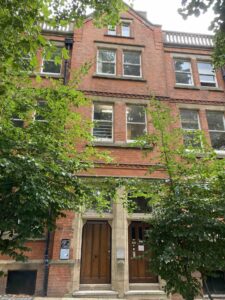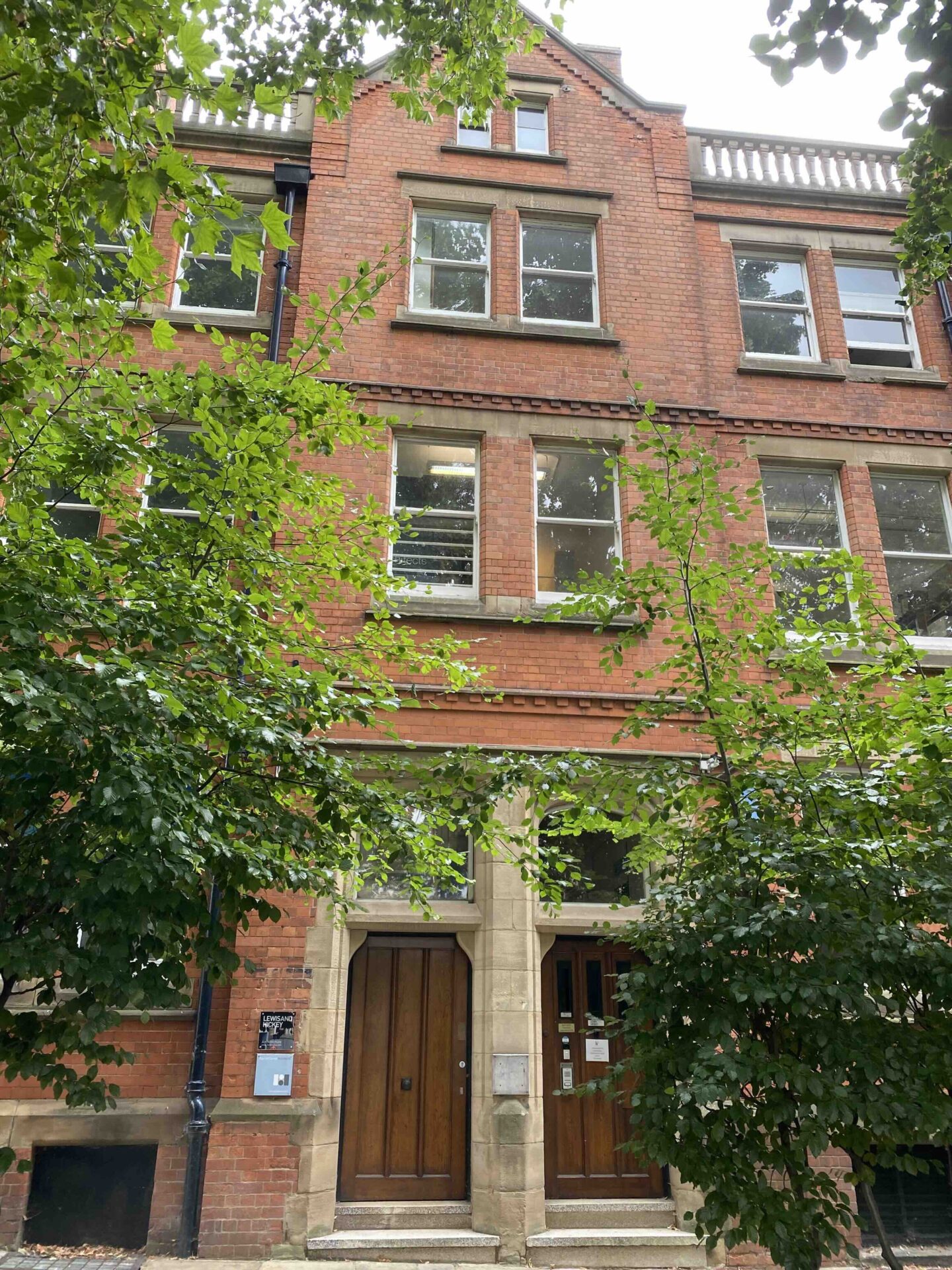
Site of the Nottingham Homoeopathic Institution, 9 St Peter’s Church Walk.
Source: Mel Draper Collection
William Bradshaw M.D. M.R.C.S. L.S.A. (1818 – 20 September 1903) was a British orthodox physician and surgeon who converted to homeopathy. He was the founder and consulting surgeon at the Nottinghamshire Homeopathic Institution, an early member and later Vice-President of what became the Midland Counties Homoeopathic Medical Society, a member of the Northern Homoeopathic Medical Association, a committee member of the London School of Homeopathy, and he was a medical officer for the Caledonian Fire and Life Insurance Company.
Bradshaw was a colleague of James Gibbs Blake, Edward Charles Chepmell, Edward Hamilton, Richard Hughes, John Maffey, John Mansell, Alfred Crosby Pope, John Rutherford Russell, Stephen Yeldham, among many others.
William Bradshaw was described as “a homeopath of the genuine stamp. His faithfulness to the homeopathy of Hahnemann, and his intellectual grasp of the law of similars, gave him a great power over disease.”
William Bradshaw was born in Brandesburton, Yorkshire in 1818, the son of clergyman John Bradshaw (d. 1829) and Tabitha Browne (d. 1842).
Bradshaw was educated in Hull and at University College London. In 1840, he received his Licences from the Worshipful Society of Apothecaries and the London Royal College of Surgeons. He then proceeded to Marischal College, University of Aberdeen, where he qualified with his M.D. in 1854.
During the Crimean War, on 15 August 1854, Bradshaw was appointed as Assistant Surgeon by the War Office Medical Department and stationed in Turkey.
Following his military service, in 1856 Bradshaw settled in Nottingham where he established a homoeopathic dispensary, open daily except Sunday, at St James’ Street.
In February 1860, Bradshaw married Marianne White (1821 – 1885), daughter of Nottingham-born, Norwich cleric, Reverend John Neville White.
The same year, William Bradshaw became a member of the British Homeopathic Society. He was an active member, serving on the organizing committee for the 1870 British Homeopathic Congress in Birmingham, and regularly attending the annual British Homeopathic Congress, including the 1872 Congress in York, the 1874 Congress held at the London Homeopathic Hospital, the 1878 Congress in Leicester, the 1891 Congress and 1902 Congress, both at the London Homeopathic Hospital. In August, 1896, he was also one of the attendees at the fifth quinquennial International Homeopathic Congress, held in London.
Bradshaw was also active in provincial homeopathic organizations. In 1863 he joined the Northern Homeopathic Medical Association and two years later, in 1865, became a member of the Midland Homoeopathic Medical Society.
Bradshaw was an occasional contributor to the homeopathic press. His paper on “The Curative Action of Snake-Poisons,” delivered at the British Homeopathic Congress, was printed in the first edition of the Annals and Transactions of the British Homoeopathic Society.
By 1871, Bradshaw was listed as residing at Pepper Street, Nottingham. He had also moved The Nottinghamshire Homoeopathic Institution to St Peter’s Church Walk. There, in 1871, it was recorded that over 1,300 new patients had been admitted, and more than 2,000 consultations were given at the Dispensary, in addition to numerous home visits of patients.
As the son of a clergyman, Bradshaw was also deeply religious. At the Church Congress held in Nottingham in October 1871, Bradshaw served as a lay member of the executive committee.
In 1874, Bradshaw was joined in Nottingham by fellow homeopathic physician and surgeon, John Maffey. Another homeopath present in Nottingham at this time who Bradshaw undoubtedly knew was physician and surgeon, Samuel Brewer Brooks (1837 – 1912).
William Bradshaw was one of twenty-five surgeons listed in an article on cases of completed ovariotomies, published in the June 12, 1880, edition of the British Medical Journal. Bradshaw performed the forty-minute surgery in February 1878 on a thirty-three year old married mother of six, and had successfully removed a nineteen and a half pound tumour from the patient!
Bradshaw was a devoted Hahnemannian homeopath, as was demonstrated in a public exchange in 1882 with Robert Ellis Dudgeon concerning a lecture given by Dudgeon at the opening of the London School of Homeopathy on Hahnemann‘s later career.
The strains of his work began to take their toll on Bradshaw. In late 1881, he had retired from the Nottingham Institution owing to ill health, and had relocated to “Holmrook,” Tunbridge Wells. Shortly after, he moved again, to Worthing on the English south coast.
By July 1883, Bradshaw had moved once more, this time to Guildford, Surrey. Within the year he had relocated for a final time, to 122 Holland Road, West London where, although retired, he continued to see a small group of his older patients.
Bradshaw also maintained a professional engagement with his homeopathic colleagues, and in January 1889 he was one of young homeopath Henri Eugene Husson‘s attendants during his final illness, alongside John Henry Clarke and Robert Ellis Dudgeon. Also in 1889, Bradshaw joined a testimonial committee in honour of Alfred Crosby Pope, who had recently retired after twenty-five years editing the Monthly Homoeopathic Review.
William Bradshaw died at home in Holland Road, Kensington, London, on 20 September 1903, aged 85.
Of Interest:
William Bradshaw‘s older brother, John Brown Bradshaw M.D. [St Andrews, 1847] (1812 – 1874), was an orthodox physician who was born in Norfolk and later resided in Leicestershire.



Leave A Comment